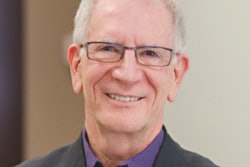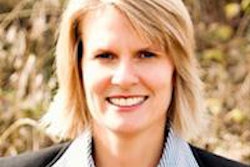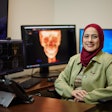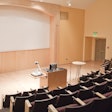
By the grace of a divine source, I made it through childhood despite an incessant desire to understand why things were the way they were. "Why?" dominated my vocabulary much like those precious 5-year-olds in our chairs that can wreak havoc with our schedules with question after question.
If for no other reason than to just get along, all of us, to some degree, learned to ask fewer questions. Our sense of wonder faded for a number of reasons, but mostly because it did not feel good to ask "Why?" anymore.
 Lisa Knowles, DDS.
Lisa Knowles, DDS.As doctors, we subconsciously dread the question "Why?" We like predictability, and questions are unpredictable. We like to govern our time, and questions force us to slow down and relinquish our control over time. But the inadvertent message sent to our patients becomes obvious: We do not have time for questions. Remarkably similar to childhood, our patients stop asking questions, or never start.
In our minds, no questions equals no problems. Furthermore, we think in terms of systems and categories when we talk to patients or ponder a diagnosis. We know the answer can be A, B, or C in any certain situation. Systematically, we make the diagnosis, pat ourselves on our backs for getting the right answer, and move on to the next patient. We spend little time investigating beyond the diagnosis. In medical and dental worlds, diagnosis is king. But moving beyond the diagnosis is where my passion lies -- along with, dare I say, the future of dentistry.
Those who can interpret data, restore patients to health, and aid patients in understanding the root cause of their disease will amass the most patients. These providers will be valued more, and patients will naturally gravitate to them. It will not be enough to identify the disease and fix it for the time being: We must fix the chronic, long, drawn-out, laborious, time-consuming, difficult, awkward, uncomfortable problem, too. For someone who prefers to move like a bullet train, I find this conclusion particularly painful. The good news is we do not have to accomplish all of this at the initial appointment.
Probing deeper
Let's investigate this further with a typical fictitious caries patient named Joe Smith. Joe willingly admits to eating too many sweets, and both parties agree to do their part to fix the problem. The dentist restores the cavities; Joe eats less sweets. Acute problem solved for the traditional dentist. Chronic problem never addressed. Joe returns later with more cavities, annoyed that he ate less cookies and brushed his teeth more and yet still has more cavities.
The whole-health dental provider offers a broader service at the first appointment. The whole-health dental provider probes further and asks Joe why he is eating too many sweets and asks him what exact sweets he prefers, knowing that if this in-depth technique is not broached, the problem will continue to resurface. The acute and chronic issues get addressed.
To extrapolate this further, consider the multiple reasons patients develop caries. Take Joe's habit with sweets. Let's say we narrow his exact source down to hard candies. Some eat candy to avoid calories. (Hard candy rarely has any fat grams.) Some eat candy to reward themselves for a job well done. Some eat candy to help them stay awake while driving long distances. Some eat candy because their mouths are too dry. The reasons are varied and numerous. Lumping everyone into one diagnosis is easy (caries); figuring out the source and why our patients eat the candy is difficult and time-consuming but far more rewarding and productive.
If we leave Joe too early or, in our case, leave the operatory too soon, we never get to ask him pertinent questions and, therefore, rarely get to the center of his disease. Worse, we may teach him to think in short-term solutions; he may ask us to fix the immediate problem "Doctor, I just want a white filling," and fail to connect to the cause of the problem -- "Doctor, I work two jobs and drive a truck all night. I suck on hard candies to help me stay awake." We must teach him to connect the dots for himself and offer behavioral modification techniques that give him alternative options.
In this case, recommending black coffee versus a sugary cola or hard candy may be Joe's initial solution. Later, we can help him find a way to get more sleep or find more financial stability. We cannot help him with his whole health until we ask about his daily life. By helping him recognize that it is his choice to cause -- or not cause -- the disease is extremely beneficial. It is also worth noting that no immediate solution may be available to Joe's problem. He may have to work two jobs right now to make ends meet, and he is aware of the root cause. He owns his disease. That is complete care.
Asking better questions
If you are wondering where to find time to ask all of these questions, here's what I did: I modeled the question-and-answer session during the initial exam appointment with our hygienists in the room, and after hearing my perpetual questioning, the hygienists eventually took over this vital role. I became the secondary questioner if the hygienist was unable to find a root cause of a preliminary diagnosis.
This obviously saved a huge amount of time and money, but it started with me demonstrating how to ask deeper, more probing questions. This took time.
Simultaneously, my staff's sense of wonder began to awaken, and instead of robotically informing the patients about their problems, the hygienists wanted to get to a deeper diagnosis as well. They no longer found satisfaction with reporting findings and cataloging bleeding points into a file. They wanted to know why the patient was struggling with a dental disease just as much as I did. More important, they wanted to be the ones to help our patients return to complete health. They bought into the process.
Ultimately, curiosity caught on, and this led to staff members who asked better questions and patients who understood their disease more completely. The results: encouraged independent thinking for everyone and less dependency on an arbitrary healthcare provider to provide a solution to a patient's problems. Everyone became empowered. Patients were elated to have a sense of control back over their health, even if it were just learning how to floss effectively and reduce perio probing depths. It was the start.
Momentum of change
Once both parties understood why things were occurring, change transpired.
Patients who receive care from a traditional dentist's approach often find it difficult to thoroughly understand why "they keep getting cavities," and frankly, the dentist remains perplexed, too. The dentist blames the patient for eating too much sugar, and the patient blames the dentist for not helping cure the disease. For doctors, this means more frustrated patients and certainly less job satisfaction.
I started down that road early in my career, but later began to ask questions again. I could not suffocate my sense of wonder no matter the number of how to practice management articles I read. Everyone else seemed quite sure that less time talking resulted in more profits. But all that didn't matter to me if I could not completely help my patients. If I could not find a clear root cause to a diagnosis early on, a consult would be scheduled to provide an opportunity to investigate further. I was mindful of the time, just not obsessive about it. Naturally, the more experience in this technique, the faster I became. Consults were less and less needed.
As years went by, my technique became ingrained in my practice. Fortunately, several hygienists and patients mentioned that my norm was different than other dentists. In disbelief, I began to ask my colleagues about their techniques. A heavy realization came upon me as I asked dentist after dentist about their patients. In my anecdotal research, a large gap appeared. Not every provider arrived at the same destination for a number of reasons. Nearly everyone made it to the acute diagnosis phase, but very few pushed beyond to find the chronic problem. Very few learned the root cause of the disease. If they did, even fewer chose to partake in the chronic disease battle. After all, it is time-consuming and sometimes uncomfortable.
The whole-health approach
Ultimately, I made the decision to dedicate my career to speaking, writing, and guiding others from a whole-health dental care provider mentality. As you can imagine, this approach starts with asking questions. Because patients are not used to someone asking them questions beyond "What hurts?" or "What broke?" they often hesitate and fall back into their childhood routines of not sharing their thoughts. Some do not even remember the answer to "Why?" because they have buried their emotional motives. It may be beyond our abilities to find the answers; a counselor or other healthcare professional may be needed.
For me, though, I just ask and listen without judgment. With time, after some relationship building has occurred, we both learn quite a bit about each other. That is when the real guidance begins. I learn why they grind their teeth. I learn why they drink a 2-liter bottle of Pepsi each day. I learn why they are so tired at night that they cannot floss their teeth.
I learn about their whole health, not just what surfaces of their teeth are cavitated. And, more important, I help them create strategies to stop their destructive behavior and save their overall health as well. The cause is usually within them -- a systemic issue. Some causes are mental, some are physical. Their clues turn me into a regular Columbo or crime scene investigator.
My new consulting role allows me to share my investigative style and allows me to help others recognize the clues. Many of us miss the clues and thus miss opportunities to help our patients. I know I missed obvious clues in my early years because I was so busy trying to focus on the teeth. I rarely missed a cavity on the x-ray screen, but I surely missed the whole patient a number of times.
When we miss the whole patient, we also miss opportunities to build a reputation for really understanding the depth of our patients. We miss practice-building opportunities and thus miss financial prospects. We miss opportunities to teach our staff how to be more effective. We miss so much that could improve the service we provide our patients.
With my new consulting business, I help dental professionals rediscover their innate healthcare instincts. I help them see the clues patients give us, and I help them put the puzzle pieces together. Once they can do this, I guide them with communication strategies to help with their patient interactions. Not all patients want to hear what may be the cause of their problems, and many certainly do not know how to fix their problems.
Through codiscovery, a true working relationship between patient and provider is attained, and then a plan can be made to help the patient get the help he or she needs. At first, the help may not be in my dental office. It may begin with a life coach, counselor, yoga/meditation instructor, physician, financial planner, or therapist. But eventually the patient returns ready for treatment and appreciative of the time I took to see them as a whole person.
It often begins with the question "Why?"
Lisa Knowles, DDS, earned her dental degree from the University of Michigan Dental School and completed a general practice residency at the Ann Arbor Veterans Hospital. Her clinical experiences range from a government supported Medicaid clinic to a dental clinic for the homeless in Toledo, OH. She began her journey into whole-health dental care while in private practice in Charlotte, MI, where she discovered an ability to connect the dots for her patients through their dental and medical-related illnesses. She now devotes her time to teaching others about the whole-health dental care concept through her company, IntentionalDental Consulting (www.intentionaldental.com).



















